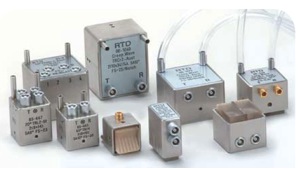9.4 Dual Element Angle Beams (TRL Testing)

Welds in coarse grain cast steel as found in nuclear pressure vessels and similar fabrications are often difficult to inspect with conventional shear wave angle beam probes due to the high level of grain scatter noise they generate. TRL probes (Transmit-Receive-Longitudinal), as the name indicates, use separate transmit and receive elements and generate refracted longitudinal waves rather than shear waves. The overlapping beam footprints of the T and R sides create a natural focal zone in which sensitivity is maximized, while the longer wavelength of longitudinal waves reduces grain scattering. Additionally, the use of separate T and R elements minimizes unwanted wedge noise at high gain. While the focusing effect limits maximum range, TRL probes are highly sensitive to reflectors located within the focal zone and are thus well suited for certain difficult applications.